Chemistry at Delaware
Although the quest for educational excellence has characterized
our Department since its beginning, our thrust into national
prominence as a major source of chemistry graduates has
taken place during the last two decades. We have ranked
in the top 25 U.S. producers of American Chemical Society-certified
B.S. chemistry graduates for eighteen consecutive years.
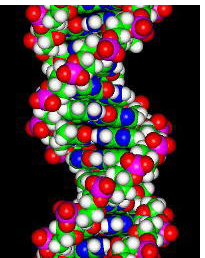 We
have produced a total of 725 baccalaureate degrees in
chemistry (B.S. in Chemistry, B.S. in Biochemistry, B.A.
in Chemistry, B.A. in Chemistry Education) during the
period 1982 through 1995. Of these graduates, ca 30% entered
graduate school immediately following graduation to pursue
advanced degrees in chemistry or chemistry-related disciplines.
Fully one-third of the 1347 baccalaureate degrees in chemistry
awarded by the U of D since 1959 have been earned by women
(women account for 40% of our 301 current chemistry/biochemistry
majors, with a majority of our biochemistry majors being
female). We
have produced a total of 725 baccalaureate degrees in
chemistry (B.S. in Chemistry, B.S. in Biochemistry, B.A.
in Chemistry, B.A. in Chemistry Education) during the
period 1982 through 1995. Of these graduates, ca 30% entered
graduate school immediately following graduation to pursue
advanced degrees in chemistry or chemistry-related disciplines.
Fully one-third of the 1347 baccalaureate degrees in chemistry
awarded by the U of D since 1959 have been earned by women
(women account for 40% of our 301 current chemistry/biochemistry
majors, with a majority of our biochemistry majors being
female).
Our Department, along with the Chemical Engineering Department,
attracts and graduates extremely capable students, especially
in our Honors Program. This is exemplified, at the input
end of the educational pipeline, by the extraordinarily
high performance level of CHEM-112 chemistry, biochemistry,
and chemical engineering majors on their American Chemical
Society standardized final examinations.
At the output end, two additional objective measures
of excellence support the above claims. Five times in
the past seven years, one of our graduating seniors received
the ultimate undergraduate scientific accolade - a National
Science Foundation graduate fellowship. Three out of four
of our student participants received awards (two of which
were first place awards) for their research presentations
at the 1995 Intercollegiate Student Chemists Convention.
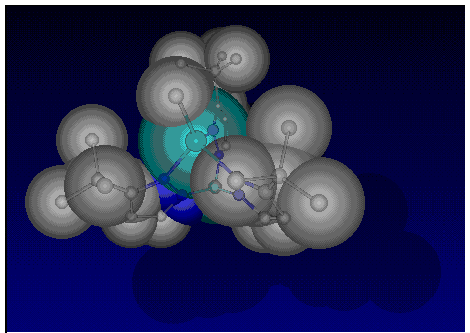 Undergraduate
research is a very important part of our curriculum. Up
to eight full-time research scholarships are available
for our majors during the summer preceding their junior
year. Our department was one of the founding schools,
in 1936, of the Intercollegiate Student Chemists. Ours
is the only department that offers a Ph.D. in chemistry
that has consistently participated in the annual ISC Convention.
Unfortunately, records for ISC awards prior to 1949 have
been lost. Since that time, undergraduate students from
53 schools in the Middle Atlantic region have received
awards for their research presentations. The 58 awards
received by the U of D students is tied for 1st place
and well ahead of 3rd place (38). It is by far the most
among the participating schools that grant a Ph.D: the
2nd place here is 12. At Delaware, a strong undergraduate
program coexists peacably with a growing graduate program;
the two programs support each other rather than compete. Undergraduate
research is a very important part of our curriculum. Up
to eight full-time research scholarships are available
for our majors during the summer preceding their junior
year. Our department was one of the founding schools,
in 1936, of the Intercollegiate Student Chemists. Ours
is the only department that offers a Ph.D. in chemistry
that has consistently participated in the annual ISC Convention.
Unfortunately, records for ISC awards prior to 1949 have
been lost. Since that time, undergraduate students from
53 schools in the Middle Atlantic region have received
awards for their research presentations. The 58 awards
received by the U of D students is tied for 1st place
and well ahead of 3rd place (38). It is by far the most
among the participating schools that grant a Ph.D: the
2nd place here is 12. At Delaware, a strong undergraduate
program coexists peacably with a growing graduate program;
the two programs support each other rather than compete.
The prognosis for the immediate future looks even brighter.
Our intensive recruiting efforts have produced a spectacular
increase in the size of our incoming major classes for
the past four years (46 in 1991, versus 81 in 1992, 106
in 1993, 99 in 1994, and 94 in 1995. In the scant six
years of its existence, our B.S. in Biochemistry program
has increased in popularity to the point that it accounts
for as many new majors as our long-standing B.S. in Chemistry
program. We recently received Faculty Senate approval
for our fifth undergraduate degree program - a B.S. in
Chemistry with Environmental Concentration - thereby beating,
once again, the ACS Committee on Professional Training
to the punch (we had our program in place before they
approved the guidelines for it). Indeed, ours was the
first program of its type in the country to be certified
by the ACS.
Our Department has recently been awarded two major grants
which have significantly benefited our undergraduate programs.
A $1M grant from the Howard Hughes Medical Institute enabled
us to develop a model program, NUCLEUS, directed by Ms.
Victoria Orner, to attract and integrate minority undergraduates
in the study of chemistry and biochemistry, introduce
a new biochemistry laboratory course, and establish scholarships
providing fully funded laboratory research experiences
for majors in their junior and senior years. Minority
representation is up to 10%, well above the University
average (4.5%). A $150K NSF instrumentation grant (PI:
Professor Murray Johnston), coupled with matching funds
from Hewlett-Packard, has enabled us to modernize our
undergraduate instructional program in the area of analytical
instrumentation.
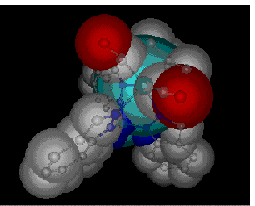 The
legacy of Professor Theodore Wolf, the first U of D chemistry
professor, has produced a chemistry/bio- chemistry faculty
whose members have received seven Lindback Foundation/
Delaware Alumni Association Excellence-in- Teaching Awards
(William Mosher, 1964; John Burmeister, 1968, 1979; Elizabeth
Dyer, 1969; Burnaby Munson, 1973; Carl von Frankenberg,
1978; Henry Blount, 1981) and two national Chemical Manufacturers
Association Catalyst Awards (Elizabeth Dyer, 1958; John
Burmeister, 1981.) Widely adopted teaching texts have
been written by Professors James Moore ("Organic
Chemistry: An Overview, co-authored with T. J. Barton",
1978; "Experimental Methods in Organic Chemistry",
3rd edition co-authored with D. L. Dalrymple and O. R.
Rodig, 1982) and Joseph Noggle ("Physical Chemistry",
3rd ed., 1996). In 1993, Professor Burmeister was named
the University's second Alumni Distinguished Professor,
"in recognition of his excellence in teaching and
extraordinary commitment to students." In 1994, he
was chosen as the State of Delaware's Professor of the
Year by the Carnegie Foundation for the Advancement of
Teaching and the Council for the Advancement and Support
of Education. The
legacy of Professor Theodore Wolf, the first U of D chemistry
professor, has produced a chemistry/bio- chemistry faculty
whose members have received seven Lindback Foundation/
Delaware Alumni Association Excellence-in- Teaching Awards
(William Mosher, 1964; John Burmeister, 1968, 1979; Elizabeth
Dyer, 1969; Burnaby Munson, 1973; Carl von Frankenberg,
1978; Henry Blount, 1981) and two national Chemical Manufacturers
Association Catalyst Awards (Elizabeth Dyer, 1958; John
Burmeister, 1981.) Widely adopted teaching texts have
been written by Professors James Moore ("Organic
Chemistry: An Overview, co-authored with T. J. Barton",
1978; "Experimental Methods in Organic Chemistry",
3rd edition co-authored with D. L. Dalrymple and O. R.
Rodig, 1982) and Joseph Noggle ("Physical Chemistry",
3rd ed., 1996). In 1993, Professor Burmeister was named
the University's second Alumni Distinguished Professor,
"in recognition of his excellence in teaching and
extraordinary commitment to students." In 1994, he
was chosen as the State of Delaware's Professor of the
Year by the Carnegie Foundation for the Advancement of
Teaching and the Council for the Advancement and Support
of Education.


Research Facilities
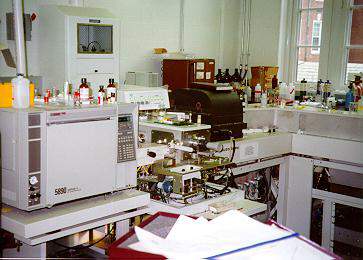 The
Chemistry and Biochemistry Department occupies the H.
Fletcher Brown, Quaesita Drake, and Lammot Du Pont Chemical
Laboratories, the latter having been completed in 1993.
The south wing of Brown Laboratory was completely renovated
in 1994-95. These connected laboratory buildings provide
over 160,000 sq. ft. of teaching, research and office
space and are fully equipped to meet the research needs
of students and faculty. They contain a centrally located
chemistry stockroom and electronic, machine, and glass-blowing
shops that are staffed by full-time specialists. The
Chemistry and Biochemistry Department occupies the H.
Fletcher Brown, Quaesita Drake, and Lammot Du Pont Chemical
Laboratories, the latter having been completed in 1993.
The south wing of Brown Laboratory was completely renovated
in 1994-95. These connected laboratory buildings provide
over 160,000 sq. ft. of teaching, research and office
space and are fully equipped to meet the research needs
of students and faculty. They contain a centrally located
chemistry stockroom and electronic, machine, and glass-blowing
shops that are staffed by full-time specialists.
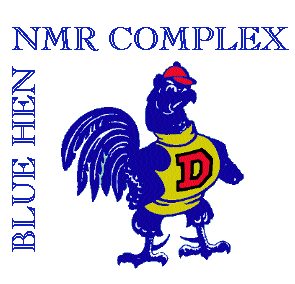 The
department is well equipped to carry out modern chemical
research in three laboratories: Brown, Drake and Lammot
DuPont. Construction of the last-named building was completed
in 1993. The "Blue Hen NMR Complex" has seven
NMR spectrometers including a Bruker 500 Mhz NMR spectrometer
and three solid-state spectrometers. In the summer of
2001 a Bruker 600 Mhz NMR with cryoprobe will be added
to this facility. We have four analytical mass spectrometers,
a Nicolet FT-2000 Fourier Transform mass spectrometer,
a newly constructed triple tandem mass spectrometer for
MS/MS studies and a VG Autospec mass spectrometer. Other
major instruments include two Siemens P4 four-circle automated
diffractometers, a Varian E-109E ESR spectrometer, Nicolet
FT- Raman spectrometer, Nicolet 800, 60SX 20SXB and 5DXB
FT-IR spectrometers, lasers with picosecond and femtosecond
capabilities, two molecular beam apparatuses, and two
home-built ion cyclotron resonance spectrometers. The
instruments are maintained by a professional staff. The
department is well equipped to carry out modern chemical
research in three laboratories: Brown, Drake and Lammot
DuPont. Construction of the last-named building was completed
in 1993. The "Blue Hen NMR Complex" has seven
NMR spectrometers including a Bruker 500 Mhz NMR spectrometer
and three solid-state spectrometers. In the summer of
2001 a Bruker 600 Mhz NMR with cryoprobe will be added
to this facility. We have four analytical mass spectrometers,
a Nicolet FT-2000 Fourier Transform mass spectrometer,
a newly constructed triple tandem mass spectrometer for
MS/MS studies and a VG Autospec mass spectrometer. Other
major instruments include two Siemens P4 four-circle automated
diffractometers, a Varian E-109E ESR spectrometer, Nicolet
FT- Raman spectrometer, Nicolet 800, 60SX 20SXB and 5DXB
FT-IR spectrometers, lasers with picosecond and femtosecond
capabilities, two molecular beam apparatuses, and two
home-built ion cyclotron resonance spectrometers. The
instruments are maintained by a professional staff.
Departmental instrumentation includes high resolution
ultraviolet, visible, fluorescence, and atomic absorption
spectrophotometers, CD spectrometers, numerous gas and
liquid chromatographs, scintillation counters, automated
amino acid analyzers, a peptide sequenator, preparative
and analytical centrifuges, high-sensitivity calorimeters
and other thermal instruments, and various other specialized
equipment for the characterization of chemical compounds
and the investigation of reactions.

Undergraduate Research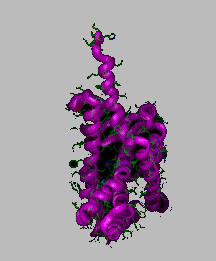
Many Chemistry and Biochemistry majors at the University
of Delaware choose to expand their education by doing
research. Most faculty in the department accept undergraduates
in their laboratories. Many of our students have published
papers or presented talks at scientific meetings on the
results of their work. Up to eight full-time research
scholarships are available for our majors during the summer
preceding their junior year.
For information about the fields of research available,
check the research
page for the department.
List
of projects compiled by the honors office.
General
information about undergraduate research at UD.
|